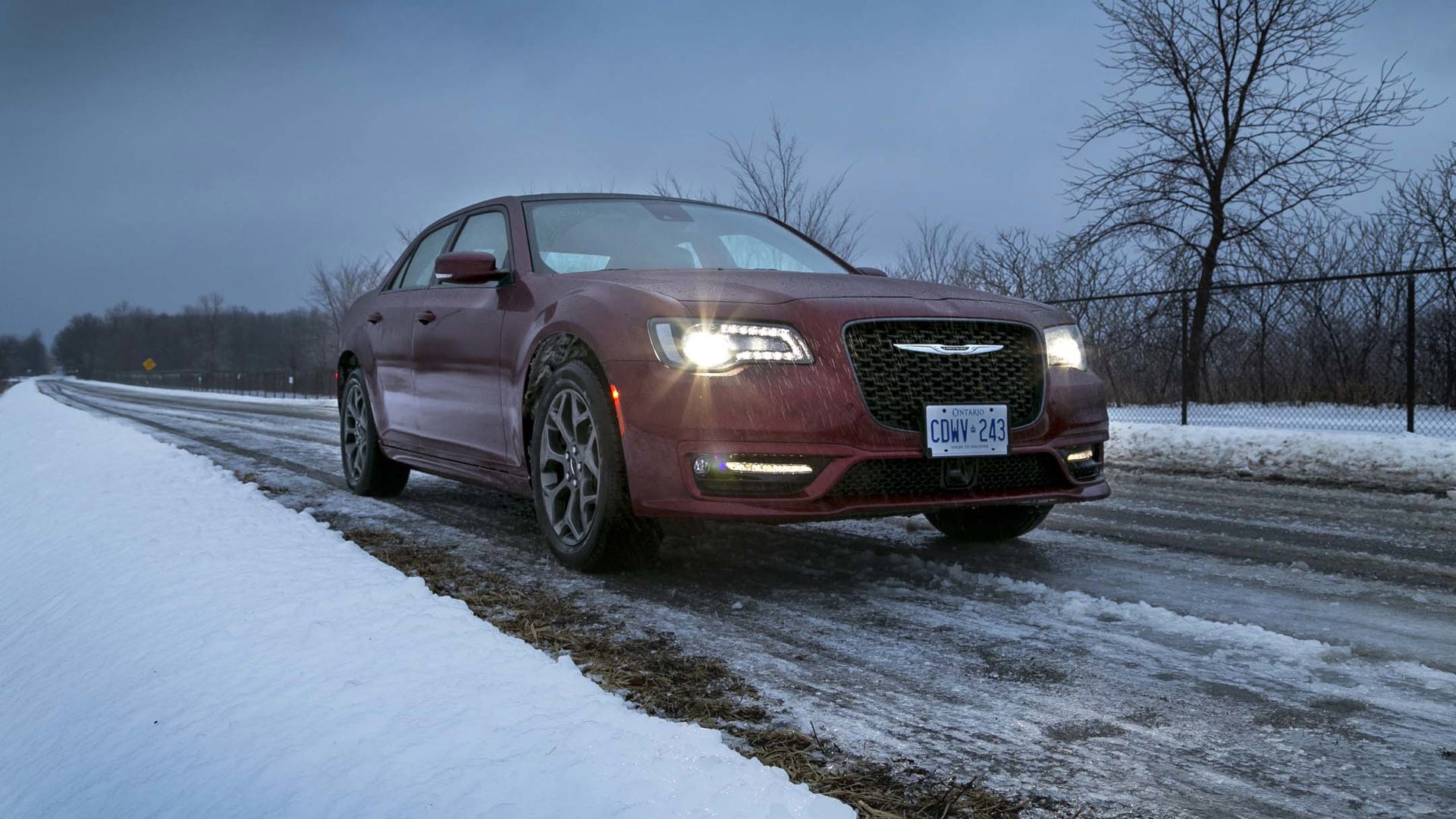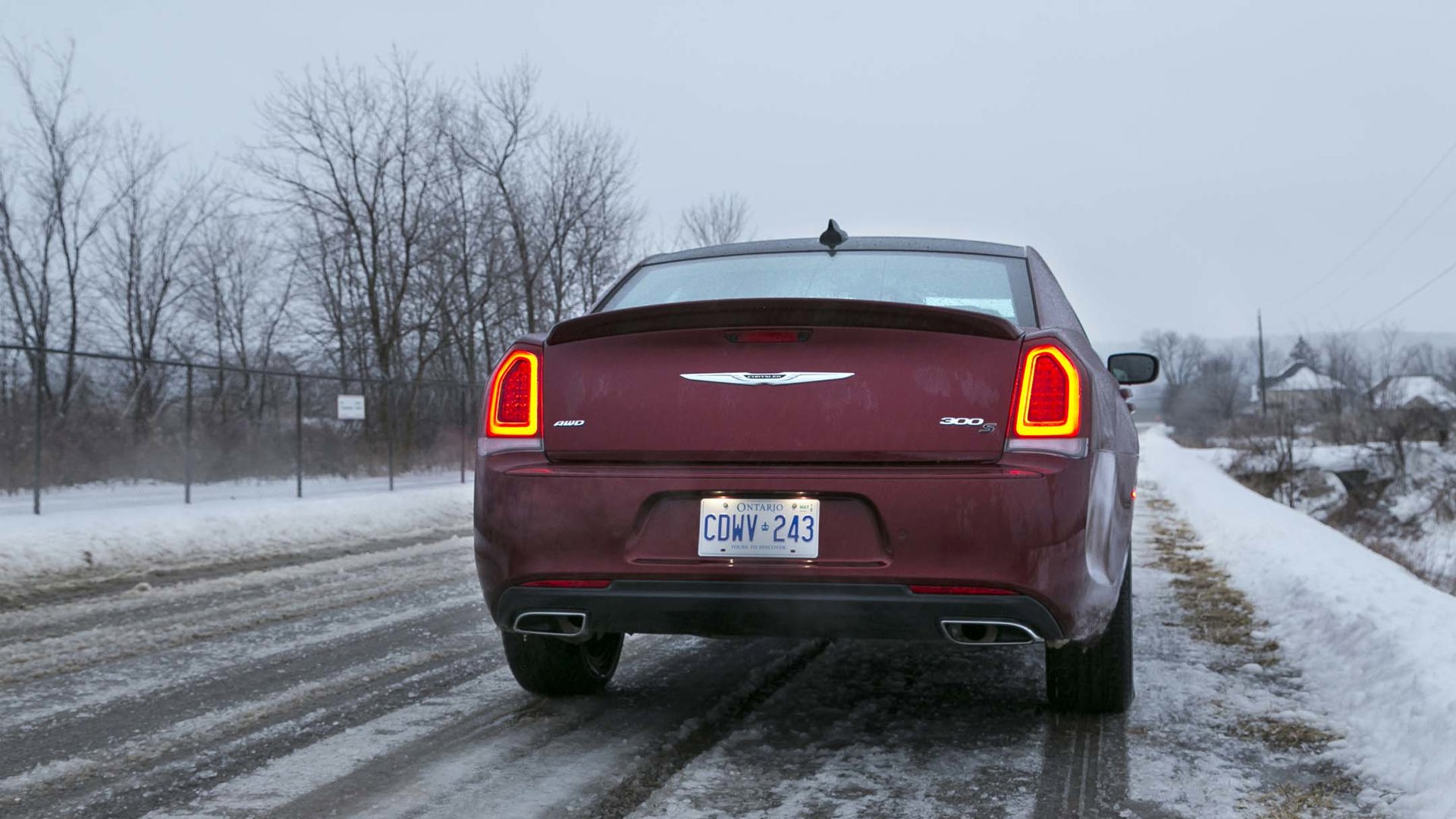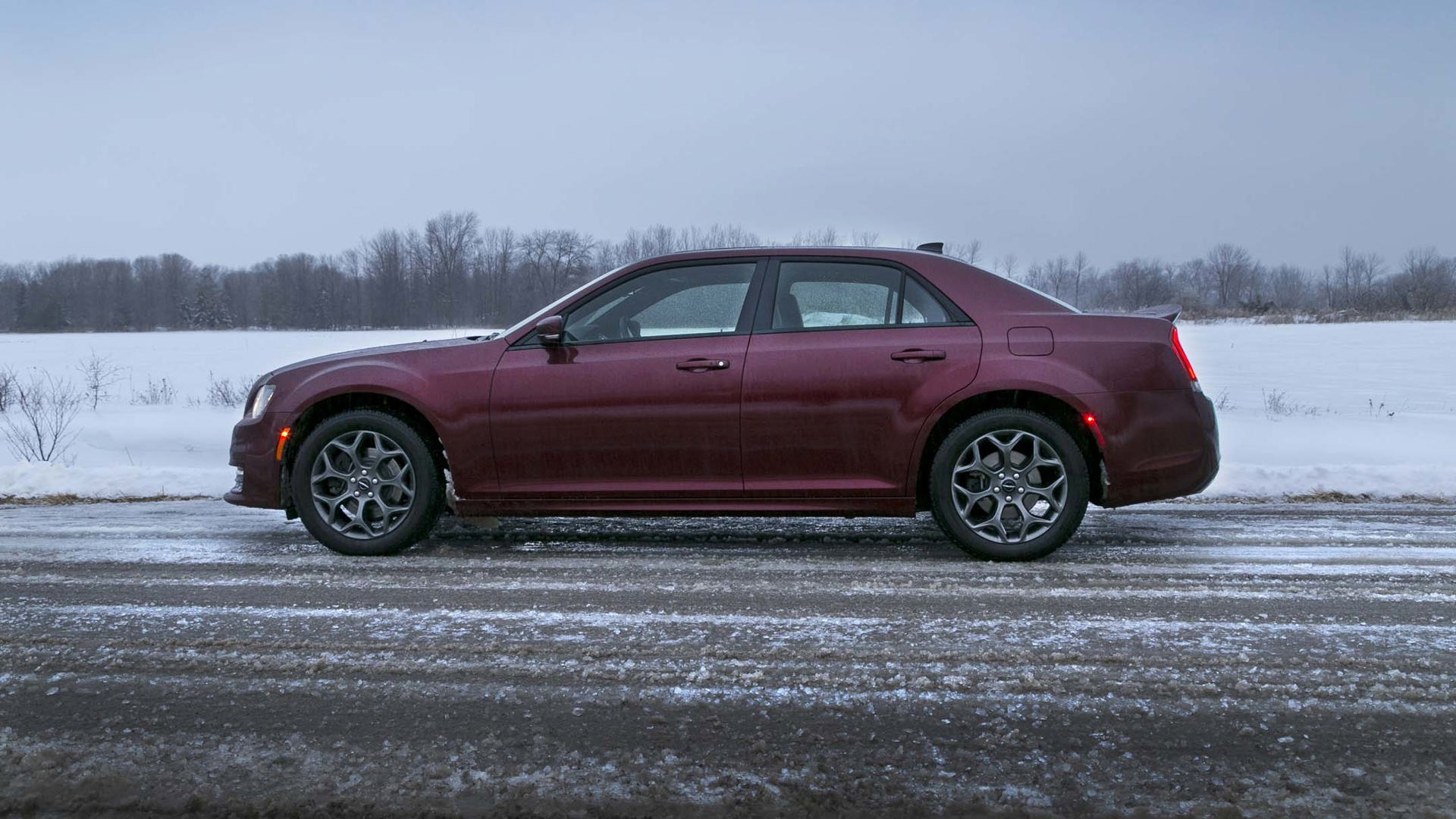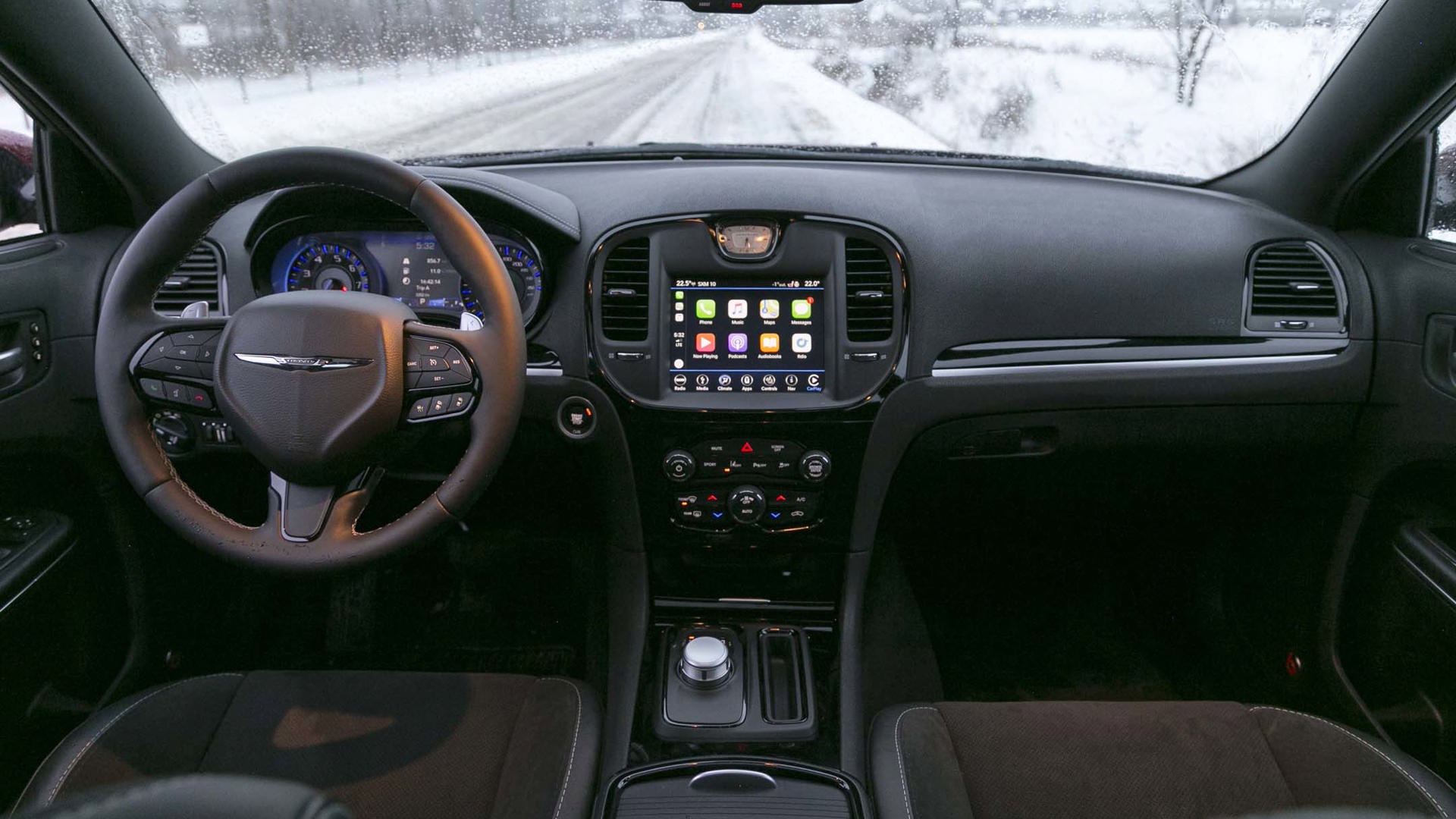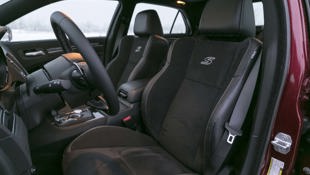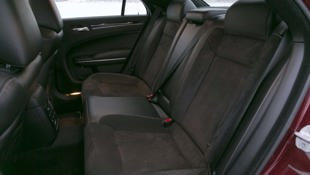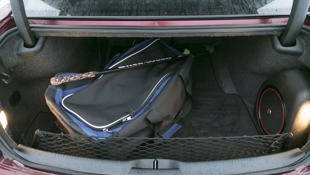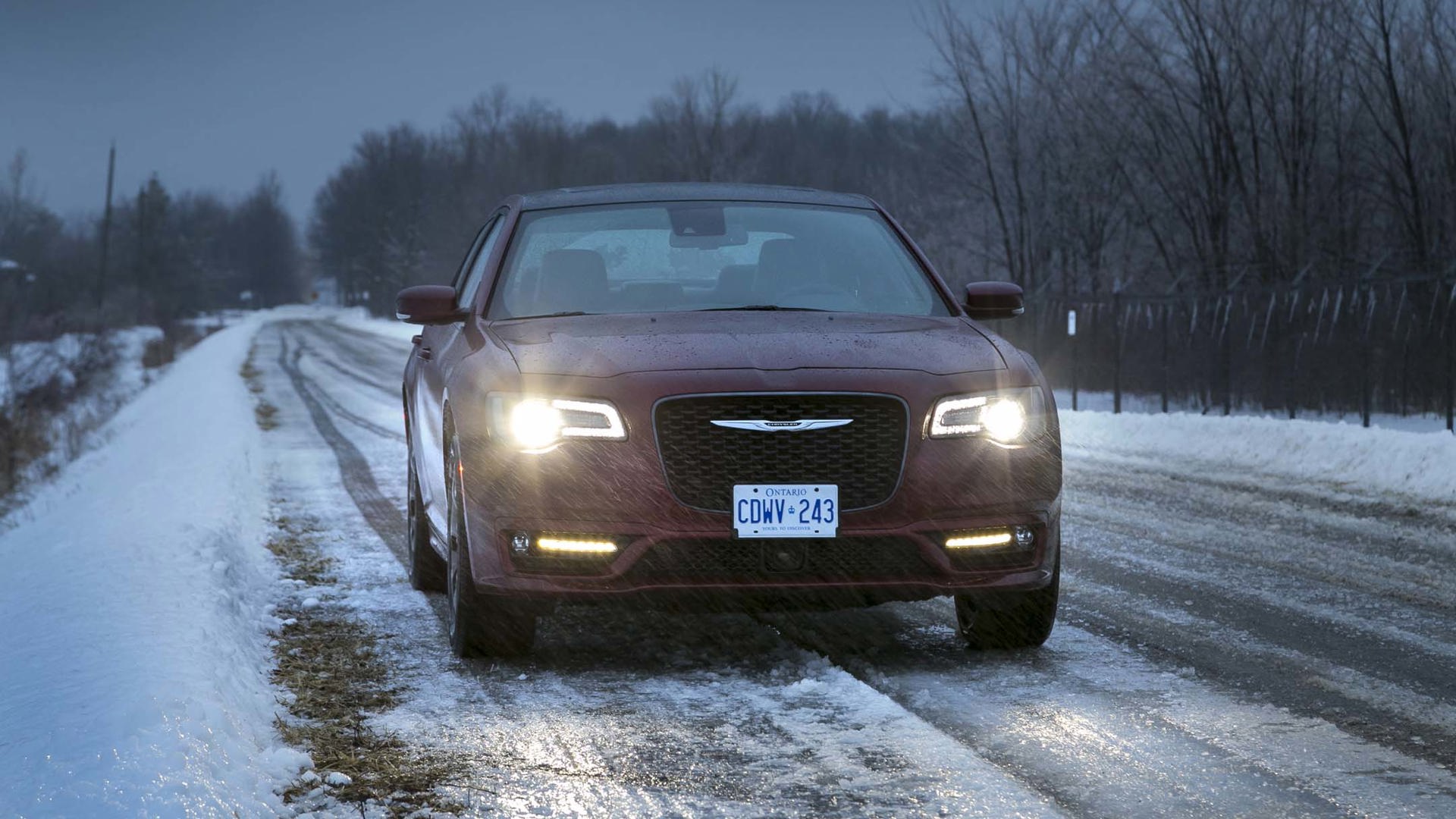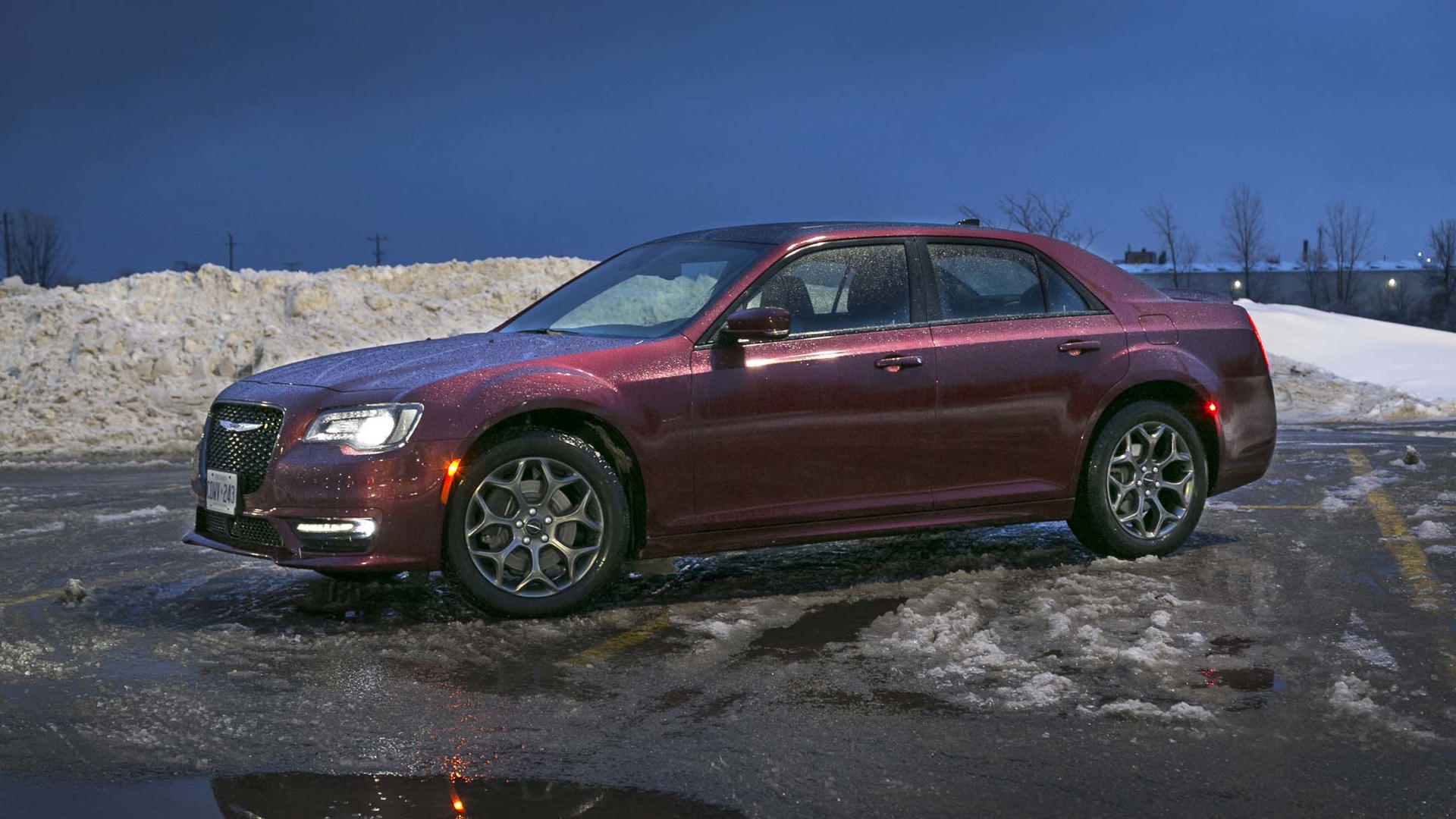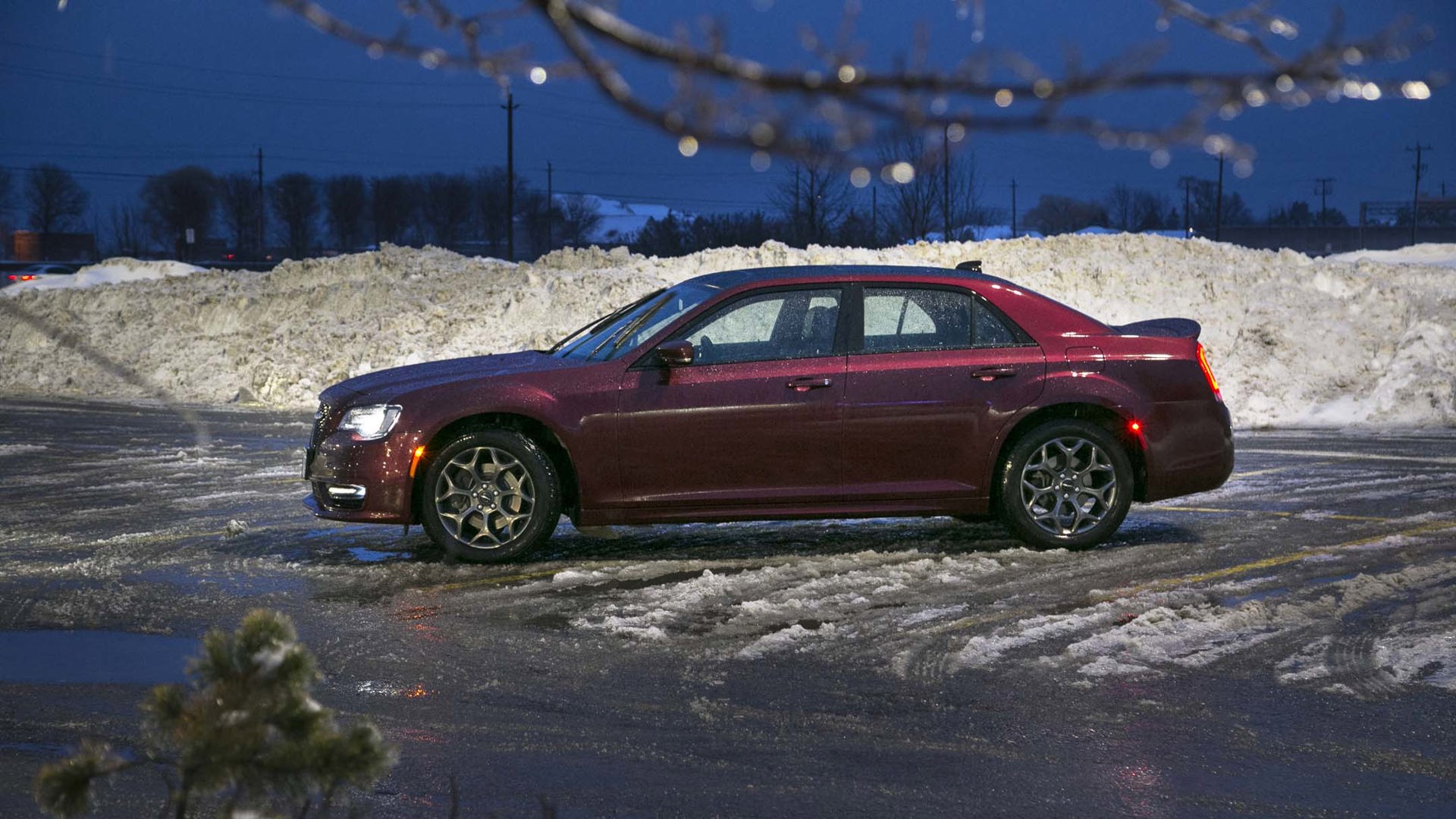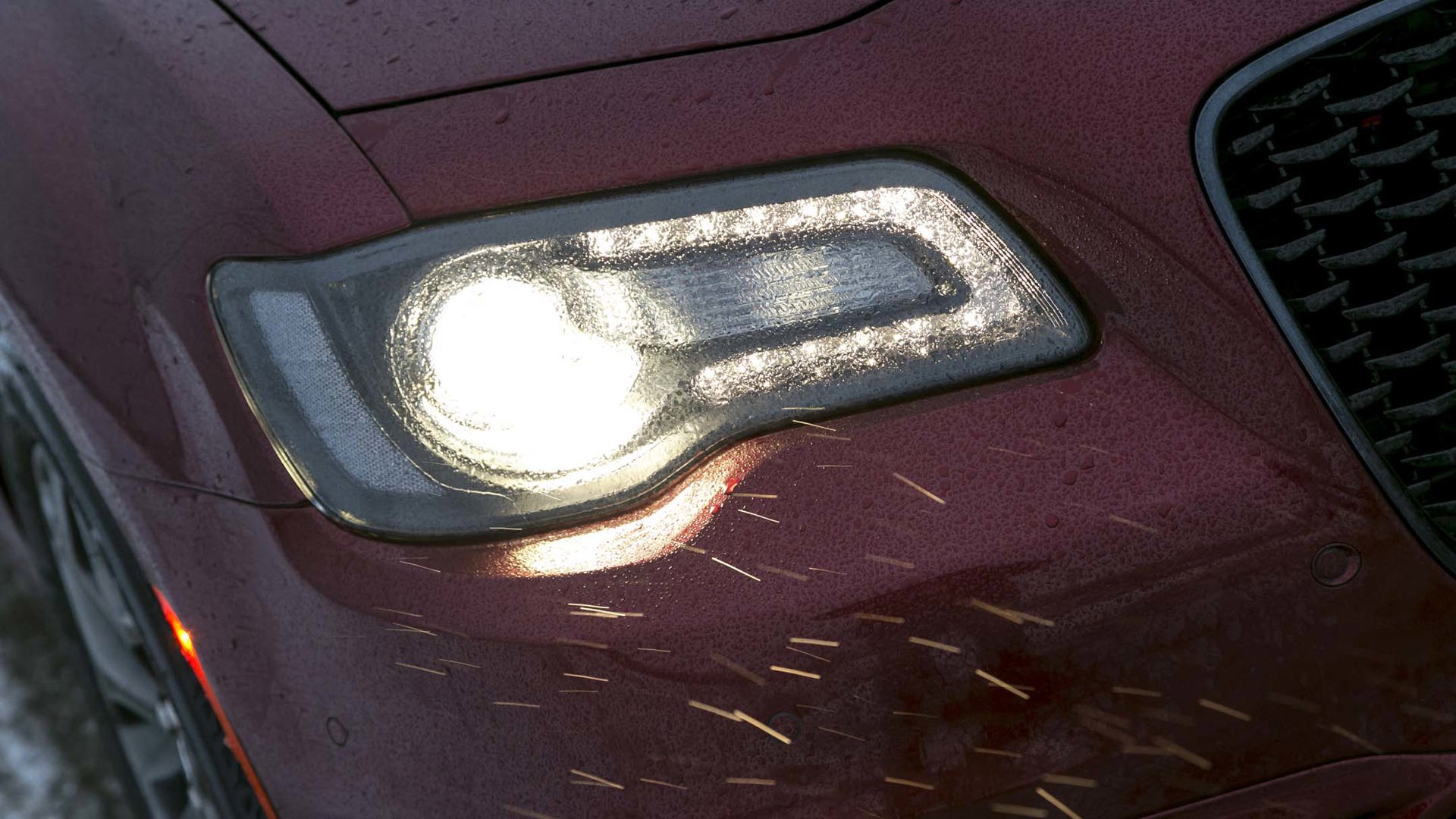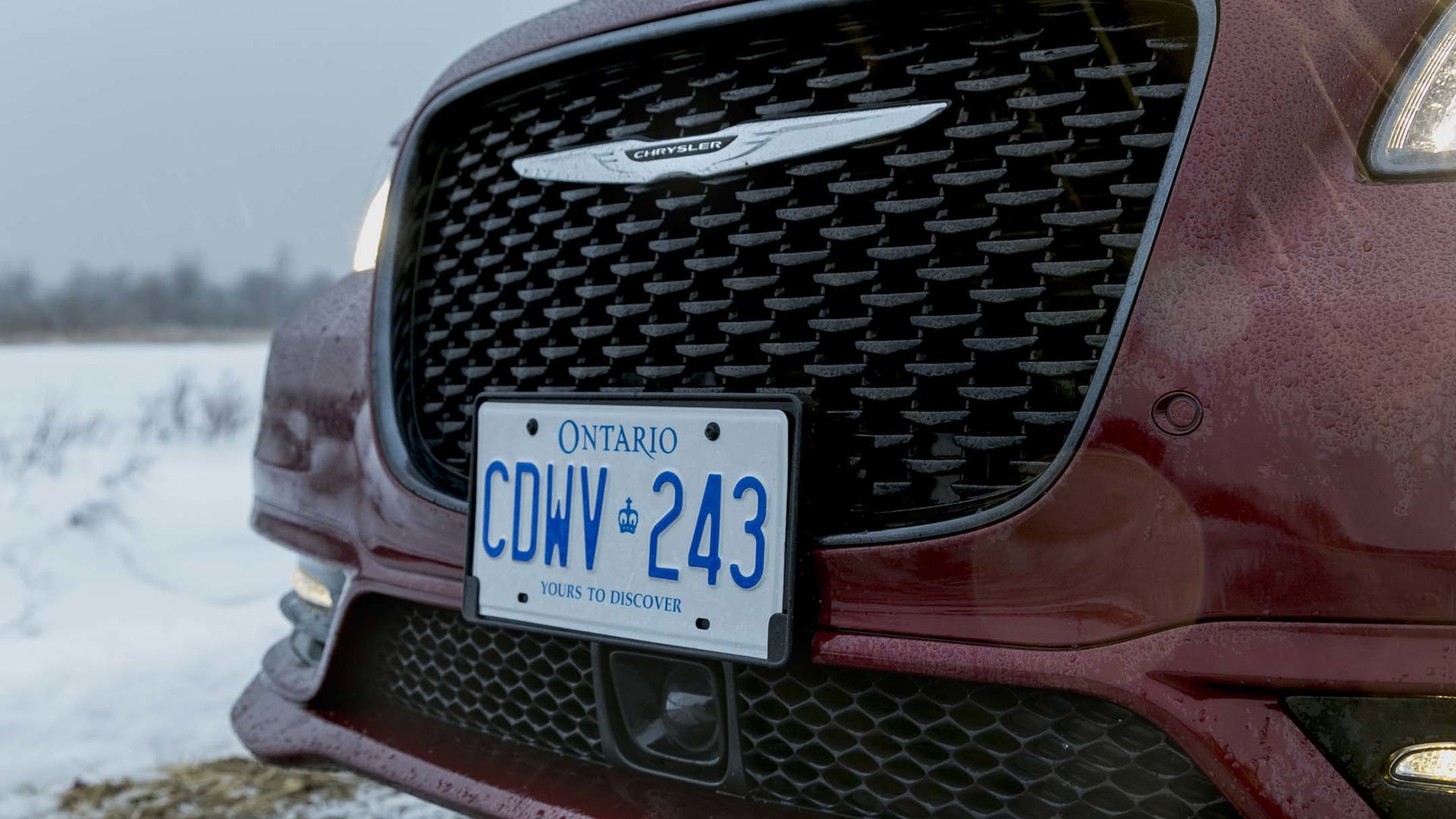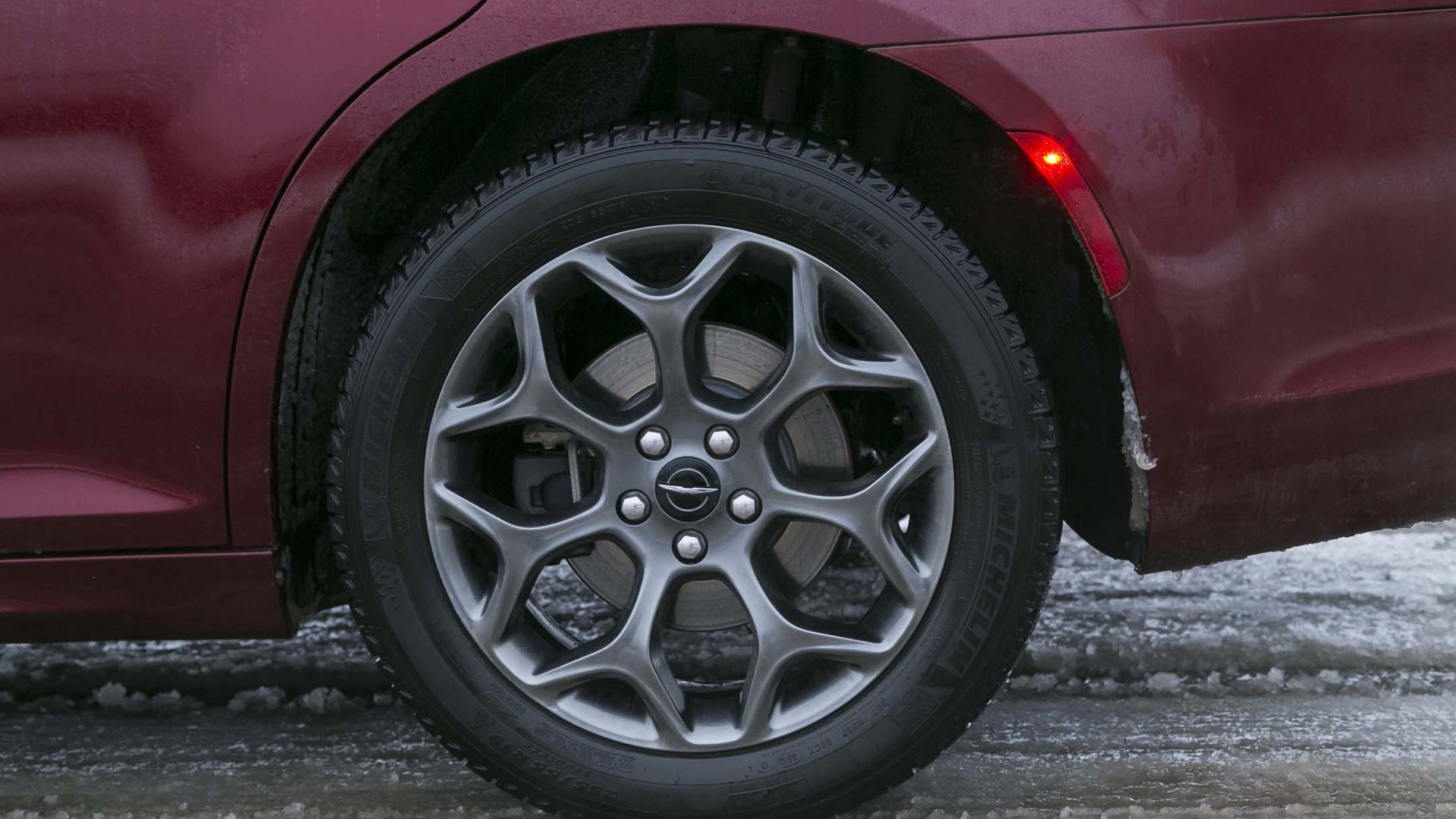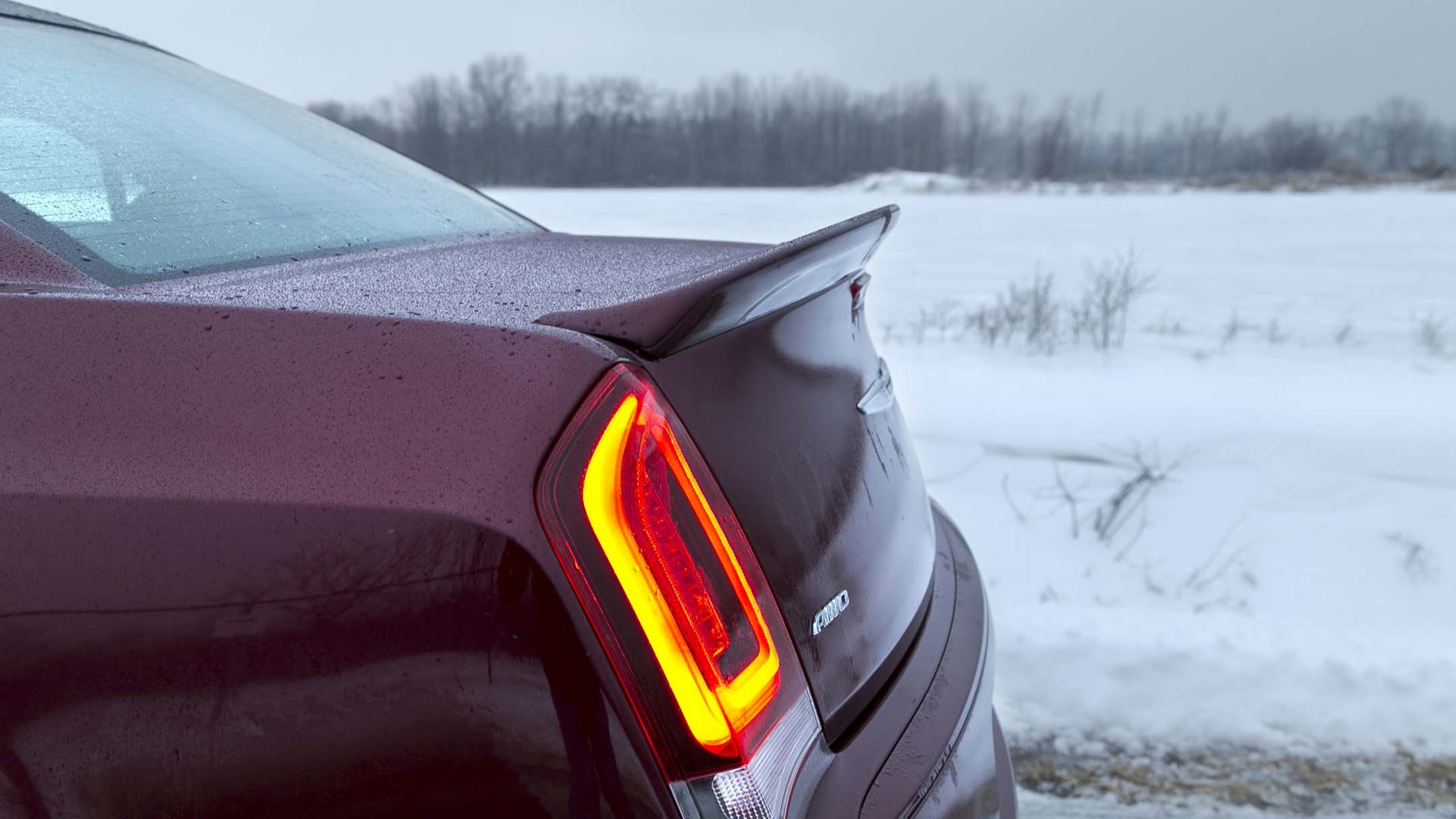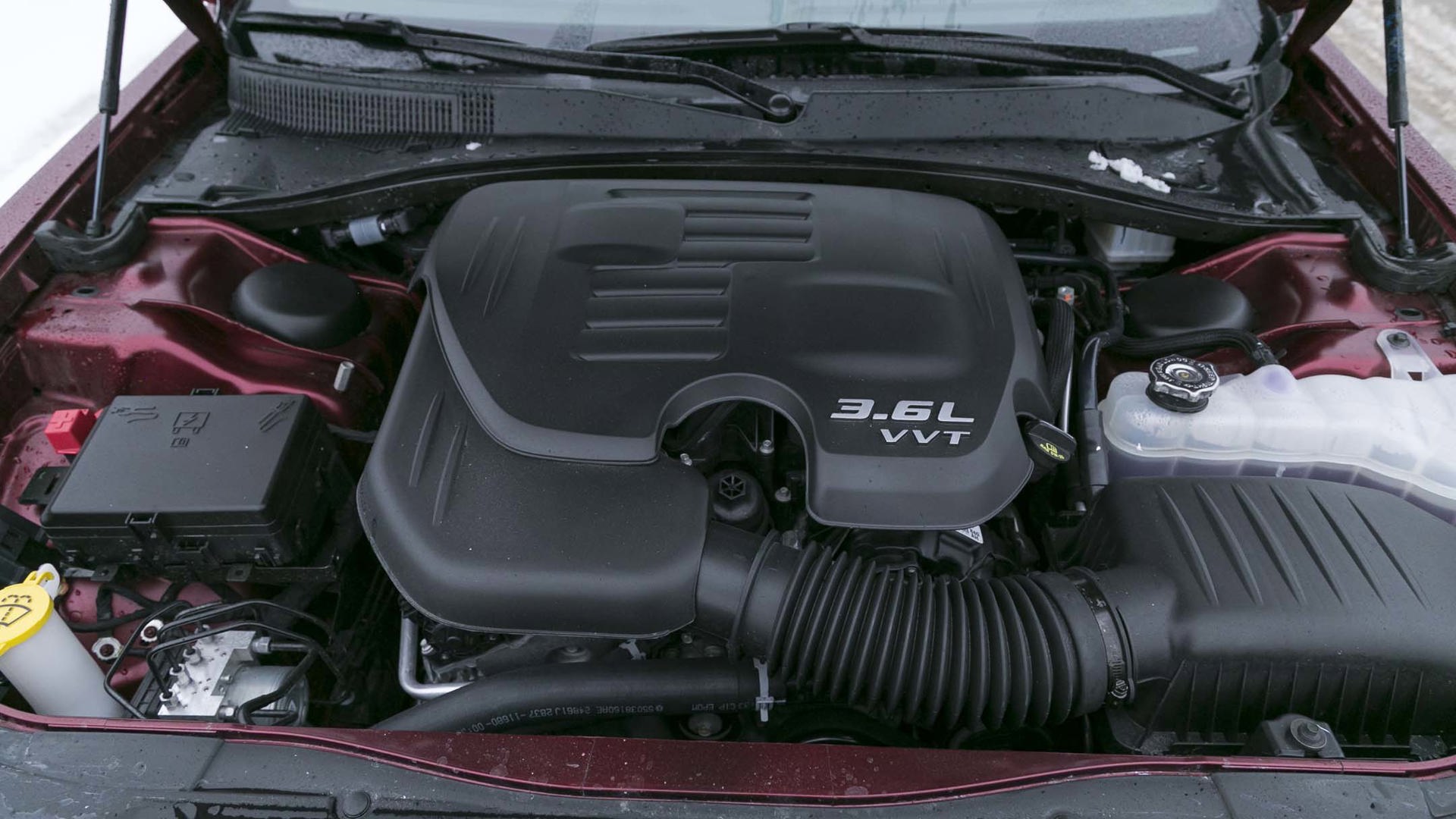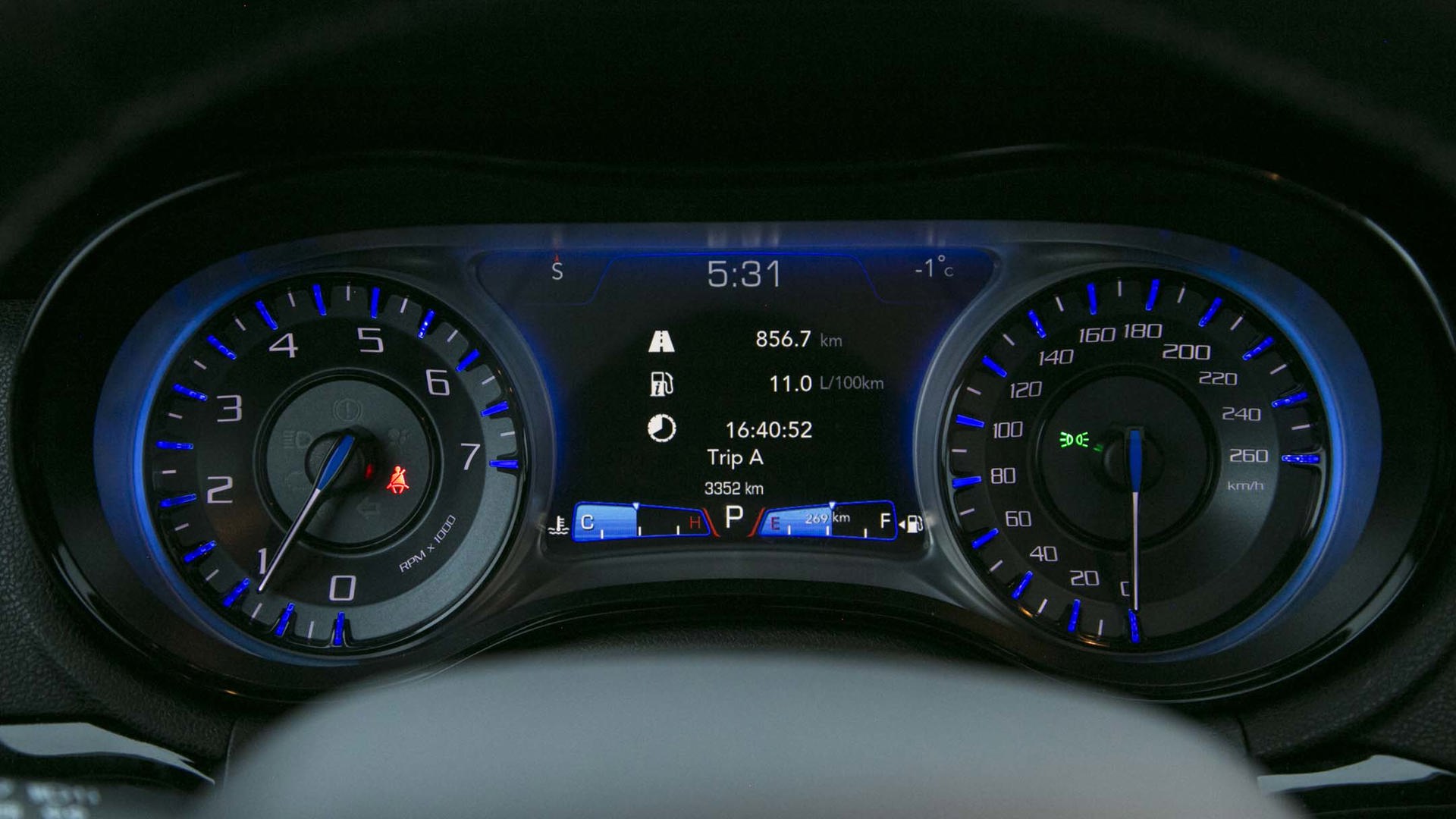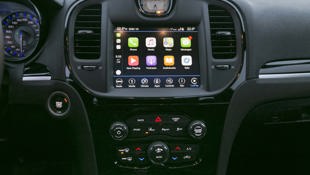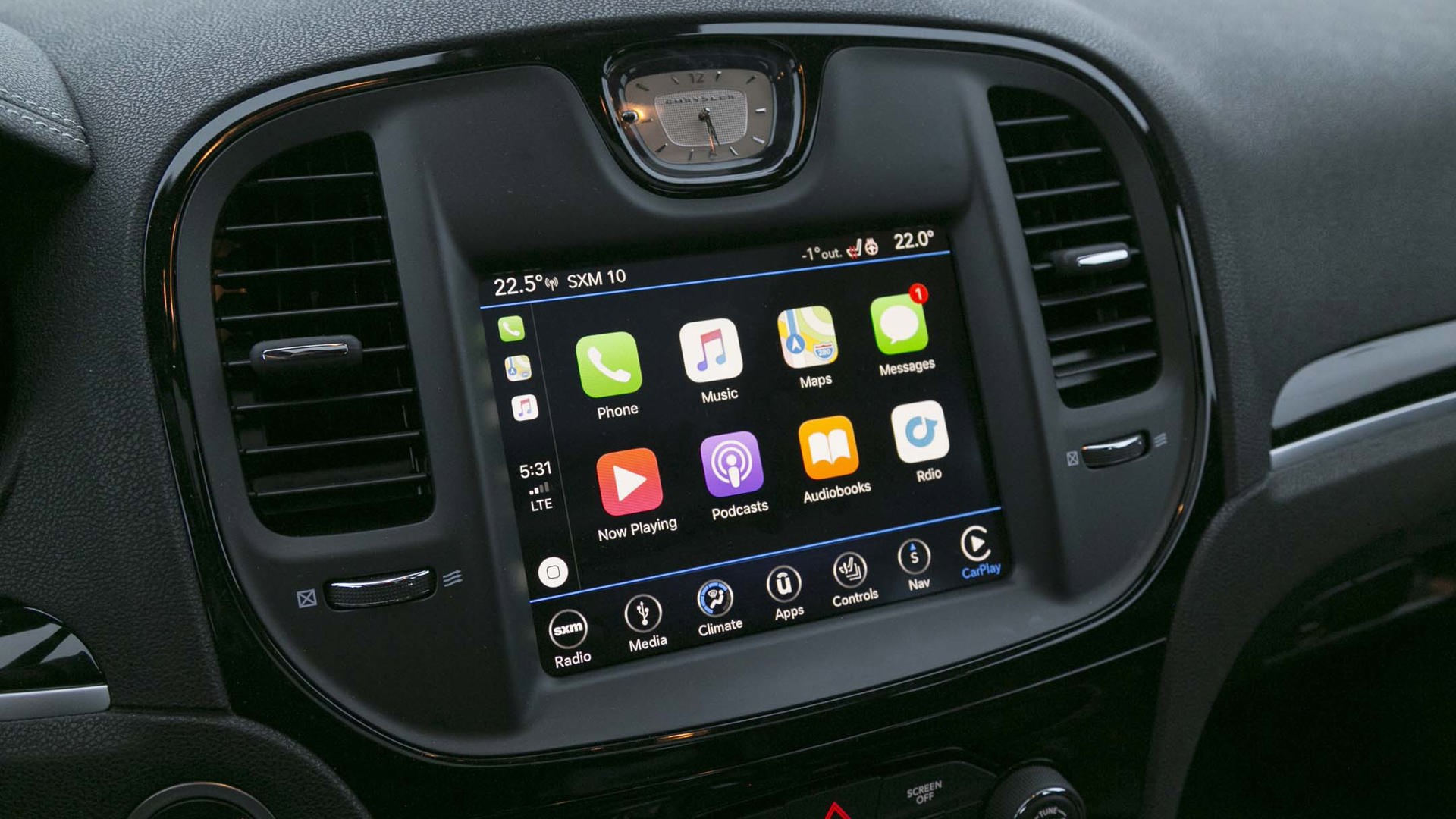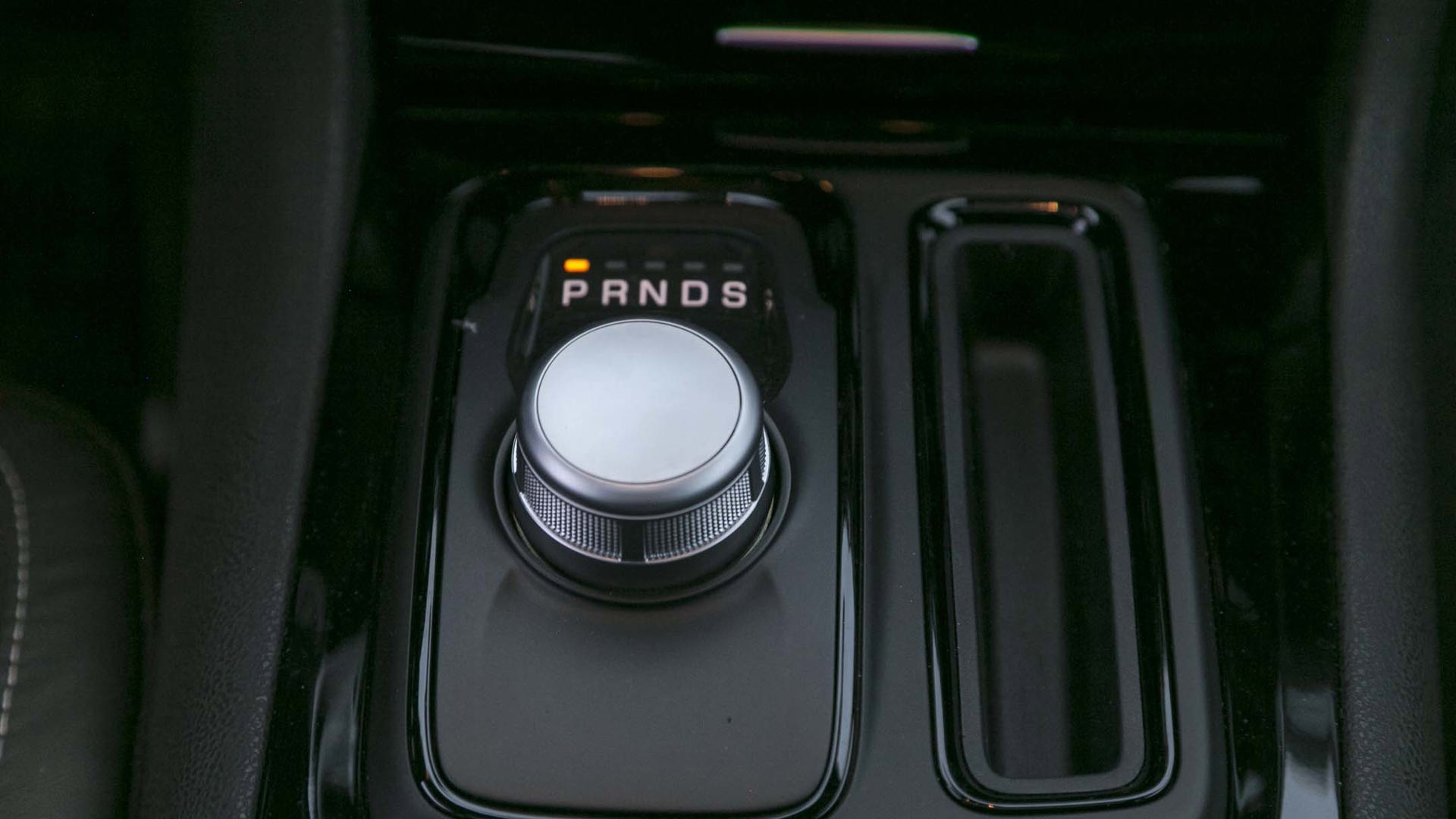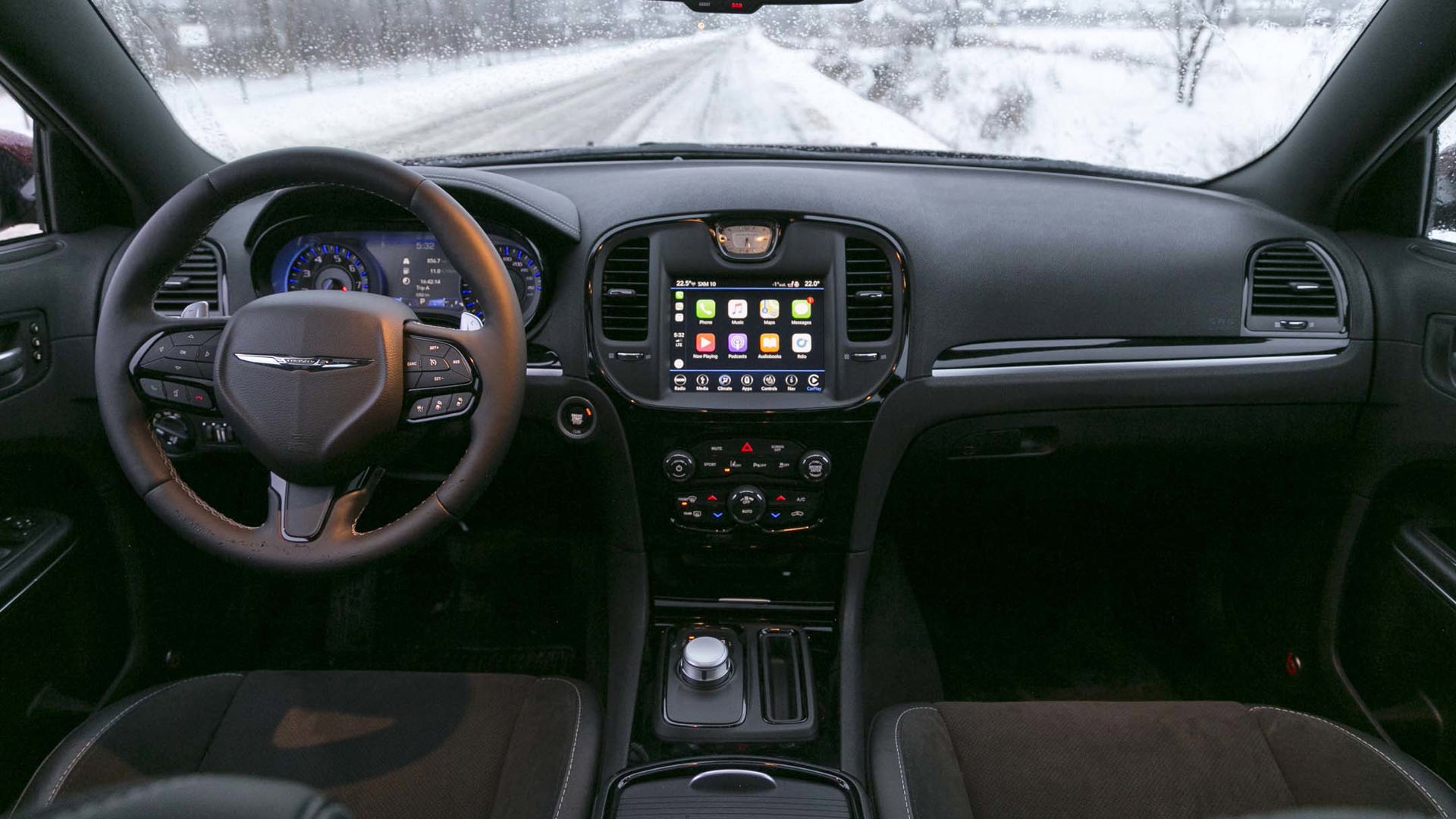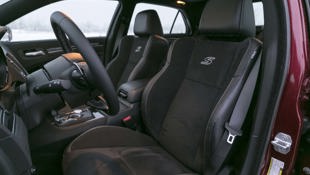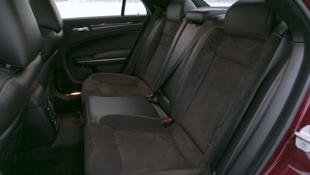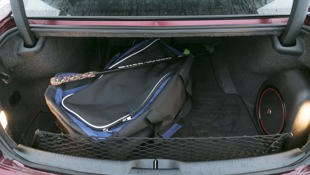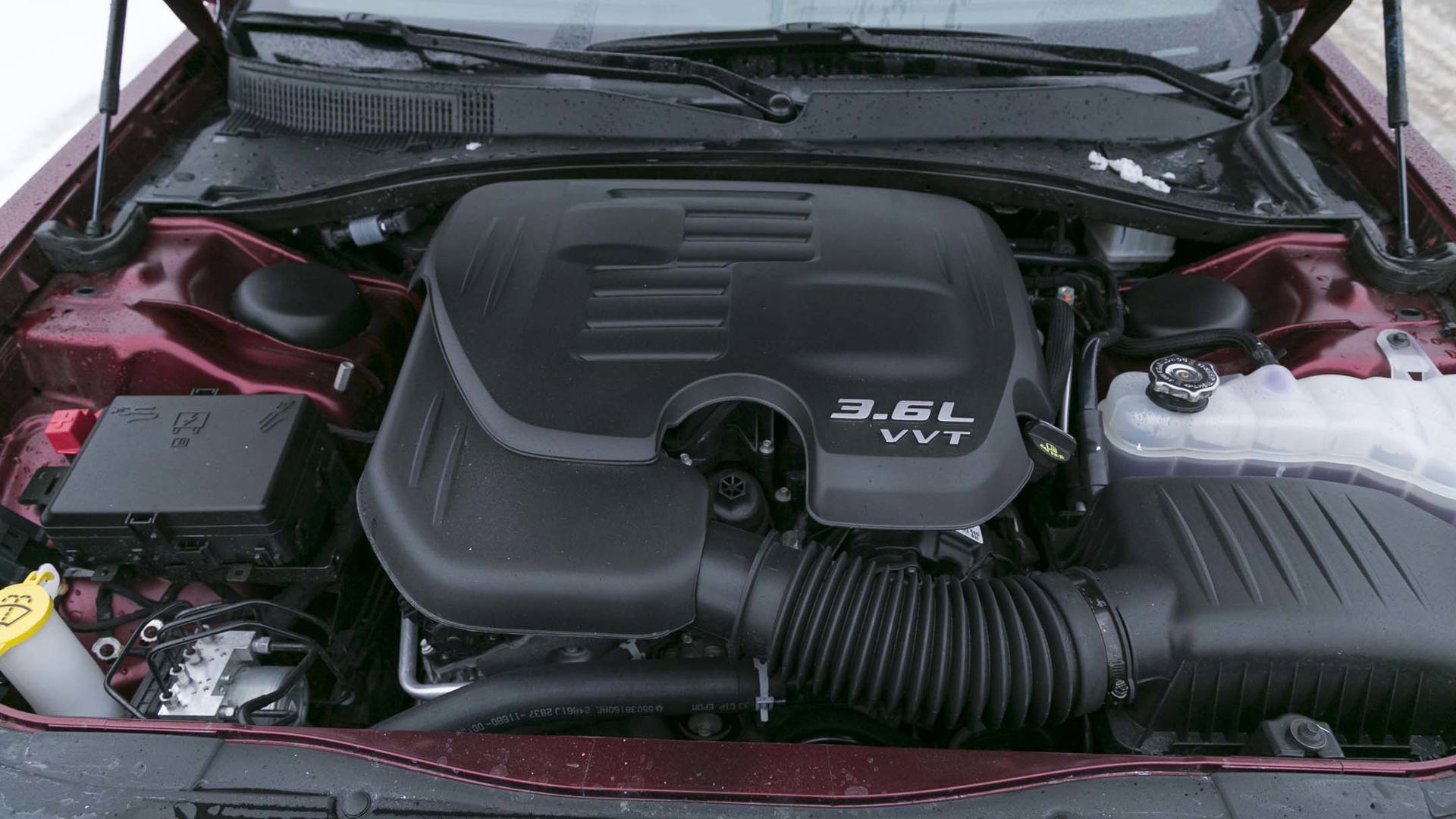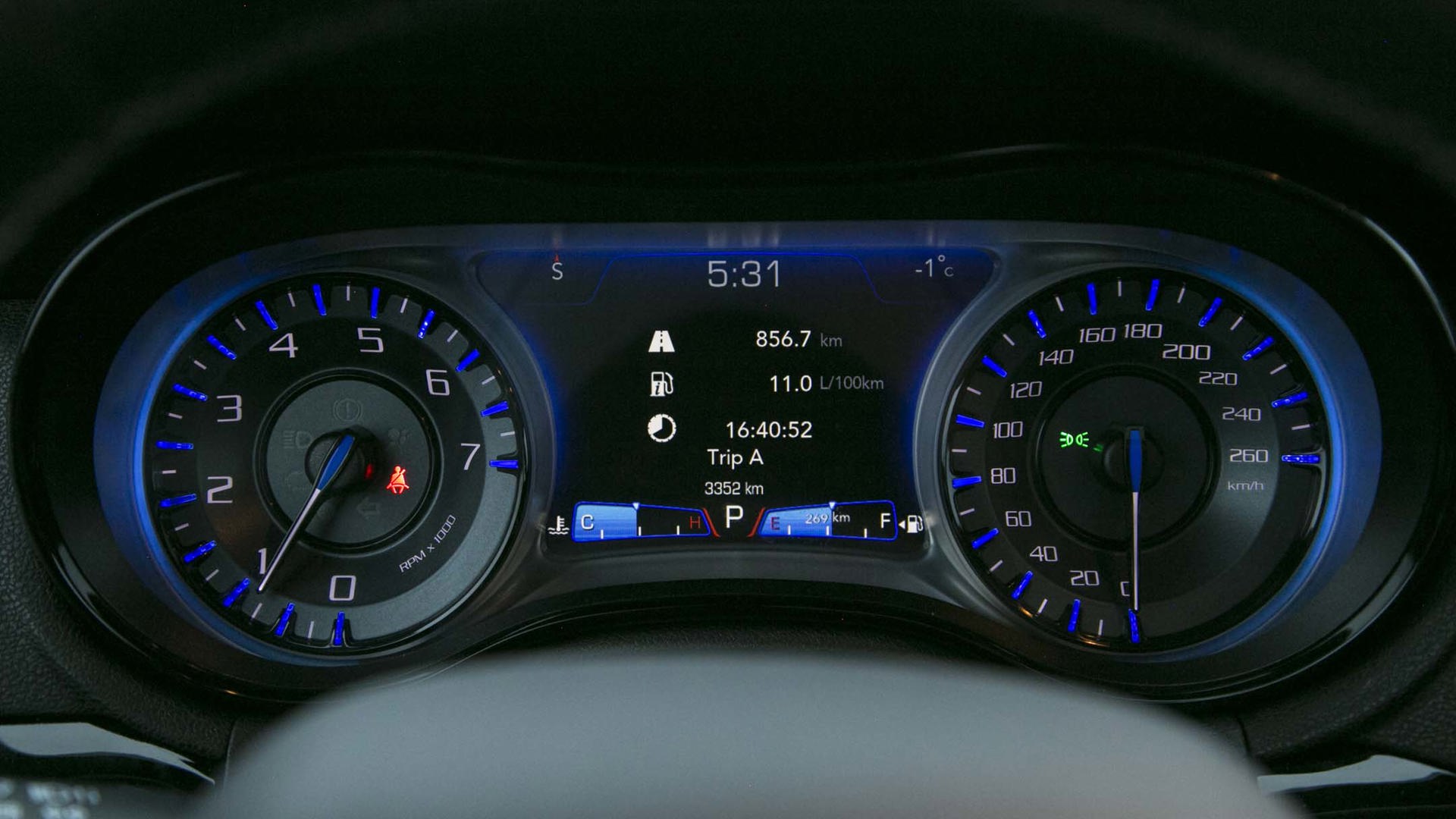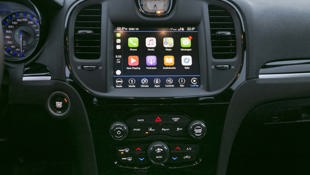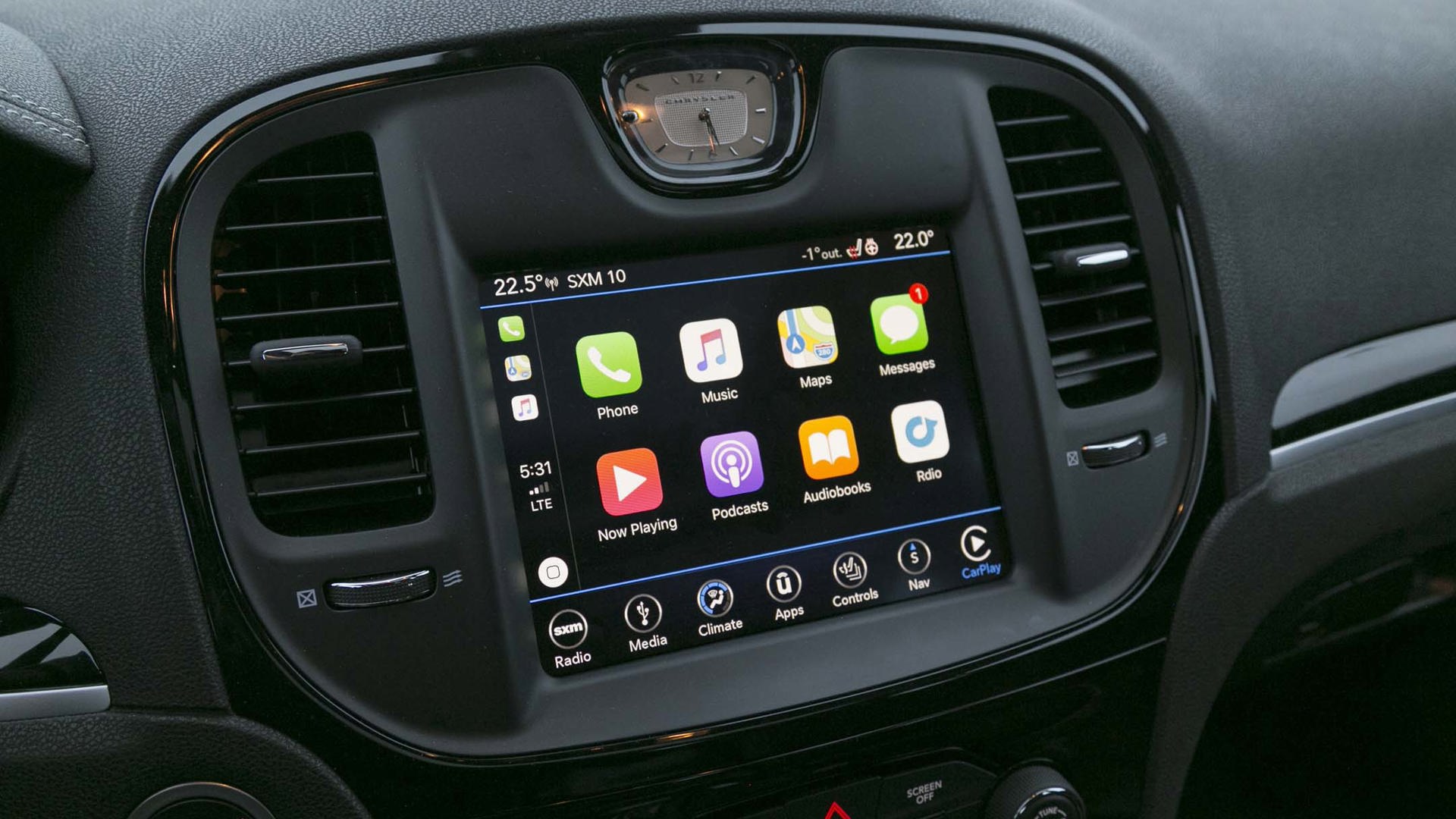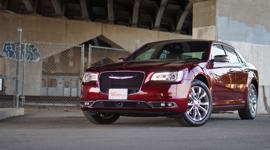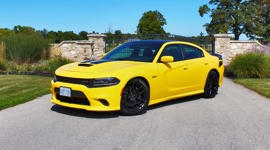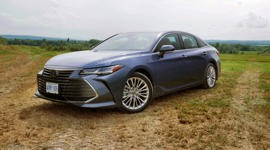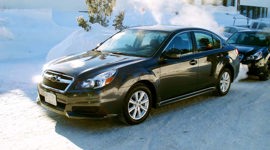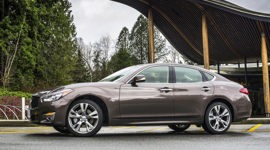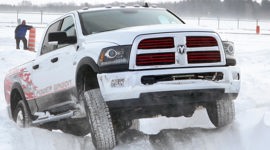 AutoTrader SCORE
AutoTrader SCORE
-
STYLING8/10
-
Safety7/10
-
PRACTICALITY7/10
-
USER-FRIENDLINESS7/10
-
FEATURES8/10
-
POWER7/10
-
COMFORT7/10
-
DRIVING FEEL7/10
-
FUEL ECONOMY6/10
-
VALUE6/10
In the past, any time I had driven any of FCA’s Charger/Challenger/300 family of cars, it always had a Hemi under-hood. Sometimes it was the result of good luck; other times, it was because I specifically requested it. But when given the choice of a smaller engine or a V8, I’d always pick the larger, less efficient choice.
I could’ve had a V8!
As a driving enthusiast – one who still appreciates the muscle car era, even if I wasn’t alive for its inception – I have a special fondness for the deep, bassy thrum of eight pistons harmoniously firing up and down in their cylinders.
That’s why, leading up to this test, I wondered if with every push of the starter button, I’d wish my 2018 Chrysler 300S AWD tester was fitted with the bigger engine.
Where once big American sedans with V8s were commonplace, these days with few exceptions they’re propelled by tiny turbocharged four- or six-cylinder engines. And while these little mills may provide adequate oomph and thoroughly impressive efficiency, they will never be as melodic as a V8.
Chrysler’s 3.6L Pentastar V6 is a very good engine – one I’ve appreciated in various forms of Jeep over the past few years. And truthfully, here in the 300S it works very well, too. It’s a smooth engine and the 300 hp it provides in this guise is more than enough to move the big car along swiftly. Those who’ve grown accustomed to turbocharged engine torque may feel the normally aspirated V6 is a little soft in its bottom-end power delivery, but most buyers are unlikely to complain.
Students preparing for college this fall were not yet born when Ralph Gilles penned the previous-generation Chrysler 300 design. This car here is the new-generation 300. Of course, “new” is a relative term and Chrysler’s big sedan has seen minimal change since 2011 – a veritable eon in the auto industry.
Nevertheless, even 300s approaching the two-decade age still look good, a testament to the timelessness of the car’s unapologetically form-before-function design with squat, muscular proportions, a proud front grille and the greenhouse glass that’s like a military pillbox compared to most modern sedans.
The same can still be said for this 2018 model. And finished in rich Velvet Red Pearl with most of the chrome bits blacked out, this S-trim should continue to appeal to everyone from baby boomers to wannabe rap stars for years to come.
The S trim also means that the seats wear bigger bolsters and Alcantara surfaces (replete with stitched “S” embroidery) not found on either cheaper, or more luxurious trims of the 300. The seats themselves are suitably supportive for whatever limited sporting missions one might assign a full-size sedan (and one that isn’t a properly sporting, though now-defunct, SRT variant), but they’re also stuffed with some of the firmest cushioning I can recall. The front seats are also very big and thick, cutting into rear seat knee space and making backseat accommodations feel tighter than they are.
The more luxurious C trim level features two-tone interiors with surprisingly decadent quilted, Nappa leather and open pore wood. Our S tester has plain black plastic trim, instead, that contributes to the serious, but decidedly un-exciting interior aesthetic.
Ergonomically, the 300 remains sensibly laid out, with primary controls operated by large knobs and simple buttons. What’s more, this year Chrysler has added Apple CarPlay and Android Auto to its already intuitive Uconnect infotainment system. And having grown accustomed to them on various other models, the rotary dial gear selector doesn’t bother me either. I would, however, wish to control seat and steering wheel heat functions with a button, rather than digging through a few menu screens, and the turn signal also doubles for wiper control, but these are minor complaints.
With destination charges added, along with a collection of reasonably priced options, our 300S AWD test car lists for $55,000. A similarly equipped (and sized) Buick LaCrosse or Ford Taurus Limited are priced roughly the same, but then, the entry-level pricing for the more contemporary Lincoln Continental and Cadillac CTS is also right in that same wheelhouse.
The trouble is, with the 300’s age, or perhaps because of elements carried up from cheaper models, there are details that make the big Chrysler a questionable value at over $50,000. Some of the black, plastic trim looks and feels cheap in the cabin. The steering wheel cap that goes over the airbag doesn’t nest into the steering column as smoothly as it does on most premium cars these days. And even the windshield washer jets sprout from the hood like two pimples and dribble fluid onto an otherwise clean hood. These are little details, but ones that would grate on someone who was passionate enough about cars to pick something that looks as impressive as the 300 does.
$55,000 is also a lot to spend on a car that drives okay, too. The 300 was developed in the early 2000s alongside then-corporate-stablemate Mercedes-Benz E-Class mid-size sedan. This was a good thing since it gave the Chrysler the solid structure from which to work up some stable handling traits. The ride too, remains impressive, with enough suppleness baked in to absorb the monstrous potholes littering Southern Ontario’s roads this winter, but neither handling nor ride are any better than the competitors.
The 300S AWD also weighs in at nearly 2,000 kg, which is a lot, and it reminds the driver that it’s not a sport sedan but a boulevard cruiser, despite its sporty looks (and slightly stiffer S-trim suspension). The steering, too, is numb of any significant road feel, yet is artificially weighted in the interest of making it feel sportier. It’s as if the 300 had been parked outside in the bitter cold and everything is in a semi-frozen state. In fairness, the car was tested in winter, and it was fitted with winter tires, which certainly dull road feel to a degree.
It should also be stated that the lane-keeping assist function on this car is about as aggressive as I can recall, and was quickly disabled for the duration of the test week.
The ZF-based eight-speed automatic is prolific throughout the auto industry, having appeared in many impressive European sport sedans and been put to good use, but tuned as it is here, Chrysler is clearly looking for efficiency over sportiness. The transmission climbs cogs as quickly as possible and the shifts themselves are sluggish. Even with “Sport” and “S” modes selected, gears are simply held longer, but not swapped any quicker.
The 3.6L Pentastar V6 pulls the 300S along well and sounds about as happy doing so as any of the competitor’s V6s.
And therein lies the rub. Chrysler’s 300S remains one of the best-looking sedans available for sale today, but incremental, evolutionary changes to the car’s technology can only carry it along for so long. Now, competitive models begin to feel like a generation ahead in terms of finishes, luxury details and driving enjoyment when compared to this V6 sedan. Buyers enamoured by the 300S should give the car the personality it deserves, skip the all-wheel drive and order the Hemi, so they’ll never have to say, I could’ve had a V8!
| Engine Displacement | 3.6L |
|---|---|
| Engine Cylinders | V6 |
| Peak Horsepower | 300 hp |
| Peak Torque | 264 lb-ft |
| Fuel Economy | 12.8/8.7/11.0 L/100 km city/hwy/cmb |
| Cargo Space | 461 L |
| Model Tested | 2018 Chrysler 300S AWD |
| Base Price | $45,795 |
| A/C Tax | $100 |
| Destination Fee | $1,095 |
| Price as Tested | $54,990 |
|
Optional Equipment
$8,000 – Velvet Red Pearl paint $50; Leather/Alcantara seats $500; S Model Appearance Package $700; 300S Premium Group $1,600; Safety Tec Group I $395; Safety Tec Group II $995; Panoramic sunroof $1,595; Black painted roof $1,395; Uconnect with Nav $770
|
|
